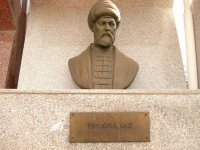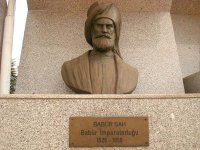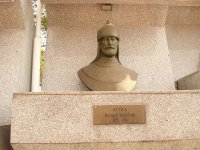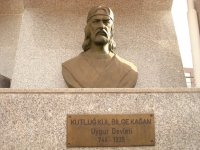Art Stolen From the Mediteranian by the Various Empires
TARTARY
"Tartary, a vast country in the northern parts of Asia, divisional past Siberia on the north and w: this is called Great Tartary. The Tartars who lie due south of Muscovy and Siberia, are those of Astracan, Circassia, and Dagistan, situated due north-w of the Caspian-sea; the Calmuc Tartars, who prevarication betwixt Siberia and the Caspian-sea; the Usbec Tartars and Moguls, who lie north of Persia and India; and lastly, those of Tibet, who lie due north-due west of China." - Encyclopedia Britannica, Vol. 3, Edinburgh, 1771, p. 887.
Now compare to the clarification given by Wikipedia, "Tartary (Latin: Tartaria) or Nifty Tartary (Latin: Tartaria Magna) was a proper noun used from the Heart Ages until the twentieth century to designate the great tract of northern and central Asia stretching from the Caspian Sea and the Ural Mountains to the Pacific Body of water, settled mostly by Turko-Mongol peoples after the Mongol invasion and the subsequent Turkic migrations."
And to add some credibility (or to take away some) to the story, below you tin find an excerpt from the CIA document declassified in 1998, and created in 1957.
Link to the document on the CIA website: NATIONAL CULTURAL Development Nether COMMUNISM
Today, nosotros have certain appearance related stereotypes. I think we are very much off there. It looks like Tartary was multi-religious, and multi-cultural. One of the reasons I think so is the tremendous disparity between what leaders like Genghis Khan, Batu Khan, Timur aka Tamerlane looked like to the contemporary artists vs. the appearance attributed to them today.
Today: Genghis Khan - Batu Khan - Timur
Hither is how 15-18th century books saw these 3
Genghis Khan
(with wife here)
Timur - Tamerlane
Batu Khan
Well, I could not find any 17th/18th century Batu Khan images, but apparently in Turkey nosotros have a few busts of the post-obit Gentlemen. Batu Khan is one of them.
A few of them I exercise not know, but the ones I do expect nothing like what I was taught at school. Besides dates are super bizarre on those plaques. Do Turks know something we don't?





The other reason why I think Tartary had to be multi-religious, and multi-cultural is its vastness during various moments in fourth dimension. For example in 1652, Tartary appears to have command over the N America.
The official history is hiding a major world power which existed every bit late as the 19th century. Tartary was a country with its own flag, its own government and its ain place on the map. Its territory was huge, simply somehow quietly incorporated into Russia, and some other countries. This state you lot can discover on the maps predating the second half of the 19th century.
Ngram by Google Books shows how Tartary was quietly put away.
Yet, some time in the 18th century Tartary Muskovite was the biggest country in the world: 3,050,000 square miles.
The flag and crest of Tartary had an owl depicted on information technology. The e mperor's flag contained a griffin on a yellow background.
There were multiple publications listing the country of Tartary and its flag/crest. Some of those publications came out equally late as 1865.
It is besides worth mentioning that in the British Flag Table of 1783, at that place are three dissimilar flags listed equally a flag of the Tsar of Moscow. At that place is also an Imperial Flag of Russia likewise as multiple naval flags. And all of them are proceeded by a flag of the Viceroy of Russia.
Significance of the Viceroy is in the definition of the term. A viceroy is a royal official who runs a state, colony, city, province, or sub-national land, in the name of and as the representative of the monarch of the territory. Our official history will probably say that information technology was the Tsar of Russia who would engage a viceroy of Moscow. I have reasons to doubt that.
Why is the flag of the Viceroy of Moscow positioned prior to any other Russian flag? Could it be that the Viceroy of Moscow was superior to its Czar, and was "supervising" how this Tartarian possession was being run?
There is a growing opinion in Russia that French invasion of Russian federation played out according to a different scenario. The i where Tsar Alexander I, and Napoleon were on the same side. Together they fought against Tartary. Essentially France and Saint Petersburg confronting Moscow (Tartary). And in that location is a strong circumstantial prove to back up such a theory.
Questions to Answer
1. Saint Petersburg was the capitol of Russia. Withal Napoleon chose to attack Moscow. Why?
2. It appears that in 1912 there was a totally unlike recollection of the events of 1812. How else could y'all explain commemorative 1912 medals honoring Napoleon?
And specifically the 1 with Alexander I, and Napoleon on the same medal. The below medal says something similar to, "Strength is in the unity: will of God, firmness of royalty, honey for homeland and people"
I take hard time imagining the below two guys on the same medal in "Honey and Unity"...
three. Similarity between Russian and French uniforms. In that location are more different uniforms involved, but the idea remains, they were ridiculously similar.
How did they fight each other in the nighttime?
Russia: Regular Ground forces
France: Regular Ground forces
There was ane additional gainsay asset officially available to Russians in the war of 1812. And that was the Militia. It does appear that this and then-chosen Militia, was in reality the army of Tartary fighting against Napoleon and Alexander I.
Russian Volunteer/Militia Units... Tartarians?
four. Russian nobility in Saint Petersburg spoke French well into the second half of the 19th century. The general explanation was, that information technology was the trend of time and fashion. Google contains multiple opinions on the thing.
- Following the same logic, U.s.a., United kingdom of great britain and northern ireland and Russian federation should've picked up German afterward the victory in WW2.
5. This i I only ran into: 19th-century fans were totally into a Napoleon/Alexander romance
American Tartary
The jury is nevertheless out on this one, but there are some indicators that Tartary was present on the North American continent as well. There apparently are no official historical accounts, but some bits and pieces of info suggest just that.
- 16th century Tartarian King Tartarrax ruled Quivira Regnum in Northward America
- The below text source: 1834 - American Antiquities, and Discoveries in the West
Books and Publications
- History Of Mufcovy Tartary Perfia And Other Countries
- History of the two Tartar conquerors of China : including the two journeys into Tartary of Father Ferdinand Verhiest
- Narrative of a pedestrian journey through Russian federation and Siberian Tartary
- Tibet, Tartary And Mongolia Ed. 2nd
- Travels In Ladak, Tartary, And Kashmir
- Travels in Russian federation, Tartary and Turkey
- A pedestrian journey through Russia and Siberian Tartary, to the frontiers of China, the Frozen Sea, and Kamtchatka
- Travels In Tartary One's Visitor And News From Tartary
- With Peter Fleming in Tartary
- A voyage to Japan, Kamtschatka, Siberia, Tartary, and diverse parts of declension of Communist china
- Tibet, Tartary, and Mongolia ; their social and political condition, and the religion of Boodh, as there existing
- Visits To High Tartary, Yarkand, And Kashghar
- The history of Genghizcan the Great, first emperor of the antient Moguls and Tartars
- The voyages and travells of the ambassadors sent by Frederick, Duke of Holstein, to the great Knuckles of Muscovy
KD Summary: I think there is enough circumstantial show to justify a deeper look into who fought who, and why this Tartary country is so little known about.
- And the main question out of this all should be what is the purpose of misleading generations of people? It appears there is something tremendously serious hidden in our contempo history.
Source: https://stolenhistory.org/articles/tartary-aka-tartaria-an-empire-hidden-in-history-it-was-bigger-than-russia-once.5/
0 Response to "Art Stolen From the Mediteranian by the Various Empires"
Post a Comment